USS RECRUIT
The PLRC met at the Liberty Station's USS RECRUIT, commonly known as the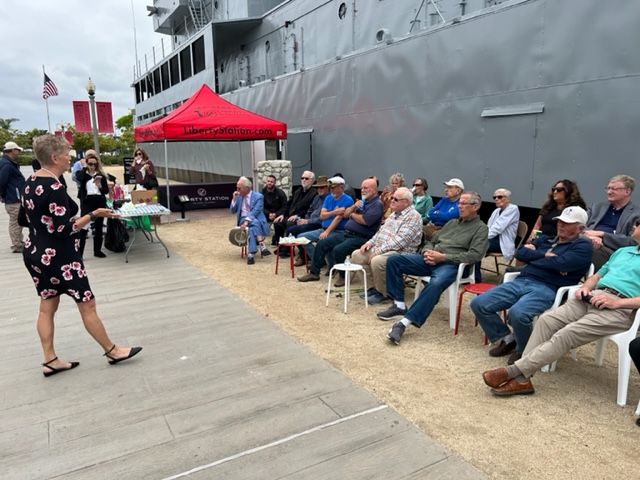 Neversail, for an educational and patriotic presentation by curator Laurie Albrecht. The event brought out our friends Steve Kappes from San Diego Wound
Neversail, for an educational and patriotic presentation by curator Laurie Albrecht. The event brought out our friends Steve Kappes from San Diego Wound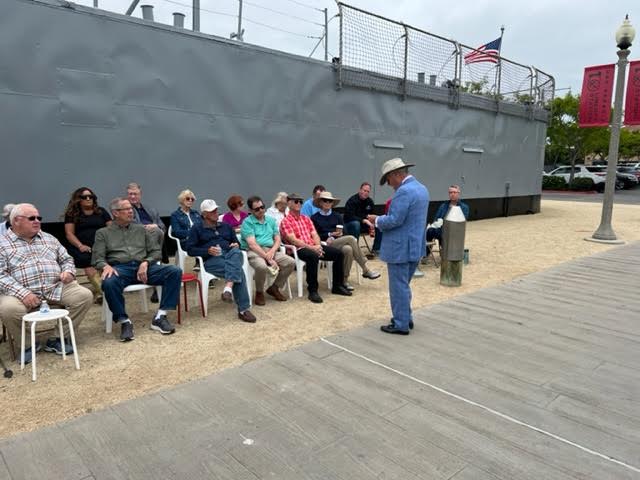 ed Warrior Tennis Project, Ray Flores Director of Military and Veteran Affairs County of San Diego, Acting Director of the County of San Diego’s, Office of Military and Veteran Affairs, USMC veteran Mich- ael Schmidt.
ed Warrior Tennis Project, Ray Flores Director of Military and Veteran Affairs County of San Diego, Acting Director of the County of San Diego’s, Office of Military and Veteran Affairs, USMC veteran Mich- ael Schmidt.
 Neversail, for an educational and patriotic presentation by curator Laurie Albrecht. The event brought out our friends Steve Kappes from San Diego Wound
Neversail, for an educational and patriotic presentation by curator Laurie Albrecht. The event brought out our friends Steve Kappes from San Diego Wound ed Warrior Tennis Project, Ray Flores Director of Military and Veteran Affairs County of San Diego, Acting Director of the County of San Diego’s, Office of Military and Veteran Affairs, USMC veteran Mich- ael Schmidt.
ed Warrior Tennis Project, Ray Flores Director of Military and Veteran Affairs County of San Diego, Acting Director of the County of San Diego’s, Office of Military and Veteran Affairs, USMC veteran Mich- ael Schmidt. Dick Thorn gave an inspirational invocation highlighting the D-Day invasion.
 The PLRC toured the hospital ship USNS Mercy (TAH-19), at the Naval Station San Diego. This buoyant event was arranged by club member Tim McCully. While on active duty in the US Navy, Tim was Commodore, Military Sealift Command (MSC) Pacific from 2000-2002−with headquarters at the Naval Submarine Base on Point Loma.
The PLRC toured the hospital ship USNS Mercy (TAH-19), at the Naval Station San Diego. This buoyant event was arranged by club member Tim McCully. While on active duty in the US Navy, Tim was Commodore, Military Sealift Command (MSC) Pacific from 2000-2002−with headquarters at the Naval Submarine Base on Point Loma.
Millions of new recruits drilled over decades on this landlocked training ship. It was opened to visitors in June, 2023, in honor of the 100th anniversary of the former Naval Training Center. The 233-foot-long structure is two-thirds the size of a Dealey-class destroyer escort. It was completed in 1949, then renovated in 1982 to resemble a modern guided-missile frigate.
 The PLRC toured the hospital ship USNS Mercy (TAH-19), at the Naval Station San Diego. This buoyant event was arranged by club member Tim McCully. While on active duty in the US Navy, Tim was Commodore, Military Sealift Command (MSC) Pacific from 2000-2002−with headquarters at the Naval Submarine Base on Point Loma.
The PLRC toured the hospital ship USNS Mercy (TAH-19), at the Naval Station San Diego. This buoyant event was arranged by club member Tim McCully. While on active duty in the US Navy, Tim was Commodore, Military Sealift Command (MSC) Pacific from 2000-2002−with headquarters at the Naval Submarine Base on Point Loma.  While subsequently serving as MSC's Liaison Officer to the Pacific Fleet Commander, Tim was privileged to be the MERCY Task Group's Commodore for three months in 2005. MERCY then provided humanitarian assistance and disaster relief during its mission to Indonesia, East Timor, and Papua New Guinea.
While subsequently serving as MSC's Liaison Officer to the Pacific Fleet Commander, Tim was privileged to be the MERCY Task Group's Commodore for three months in 2005. MERCY then provided humanitarian assistance and disaster relief during its mission to Indonesia, East Timor, and Papua New Guinea. In a classic example of "What goes around, comes around," Tim arranged for the then cur-rent captain of the Mercy, Captain Tim Quast, to provide an inspiring presentation about MERCY's duties. Ship Photos by Tim McCully
In a classic example of "What goes around, comes around," Tim arranged for the then cur-rent captain of the Mercy, Captain Tim Quast, to provide an inspiring presentation about MERCY's duties. Ship Photos by Tim McCully These include providing emergency, on-site care for U.S. combatant forces deployed in both war and peacetime operations. The ship (and her sister ship on the East Coast, USNS COMFORT) provides rapid, flexible, and mobile medical and surgical services to support Marine Corps Air-Ground Task Forces and Army and Air Force units deployed ashore, naval amphib- ious task forces, and battle forces afloat. The ship is sailed by U.S. Merch- ant Marine civil service mariners, while the 1000-bed hospital is staffed by U.S. Navy Medical Corps personnel.
HERVEY LIBRARY VISIT
 The PLRC and the Pt. Loma (branch) Hervey Library have been connected since 2000. Each week, the club donates a book obtained from the Hervey Library to the guest speaker. In April 2022, the PLRC's guest speaker, Lib- rary Director Christine Gonzalez (photo left by Robert Cenko), addressed the PLRC at the Hervey Library.
The PLRC and the Pt. Loma (branch) Hervey Library have been connected since 2000. Each week, the club donates a book obtained from the Hervey Library to the guest speaker. In April 2022, the PLRC's guest speaker, Lib- rary Director Christine Gonzalez (photo left by Robert Cenko), addressed the PLRC at the Hervey Library.
 The PLRC and the Pt. Loma (branch) Hervey Library have been connected since 2000. Each week, the club donates a book obtained from the Hervey Library to the guest speaker. In April 2022, the PLRC's guest speaker, Lib- rary Director Christine Gonzalez (photo left by Robert Cenko), addressed the PLRC at the Hervey Library.
The PLRC and the Pt. Loma (branch) Hervey Library have been connected since 2000. Each week, the club donates a book obtained from the Hervey Library to the guest speaker. In April 2022, the PLRC's guest speaker, Lib- rary Director Christine Gonzalez (photo left by Robert Cenko), addressed the PLRC at the Hervey Library. Much of the library's design follows a nautical theme. It thus includes a faux ship's hull, and an actual working peri- scope from the USS Flasher (photo right by Christine Gonzelez). It extends from the lower floor to the roof. Patrons can thereby enjoy a 360-degree view of the surrounding co mmun- ity. A rotunda, with a terrazzo map of the Point Loma peninsula on the floor, was designed to be a pivot point between the library and the community meeting area.
mmun- ity. A rotunda, with a terrazzo map of the Point Loma peninsula on the floor, was designed to be a pivot point between the library and the community meeting area.
 mmun- ity. A rotunda, with a terrazzo map of the Point Loma peninsula on the floor, was designed to be a pivot point between the library and the community meeting area.
mmun- ity. A rotunda, with a terrazzo map of the Point Loma peninsula on the floor, was designed to be a pivot point between the library and the community meeting area. This state-of-the-art facility holds 80,000 books and other materials. Book stacks were designed in a radiating fashion so that library staff at the central desk has visual control of most of the library. The roof forms simulate waves breaking on a beach. The Hervey Library is thus a beacon/landmark for the neighborhood that is reminiscent of the region's most notable landmark, the Point Loma Lighthouse.
Photo by Bill S
Photo by Bill S
CABRILLO NATIONAL MONUMENT (April 2024)
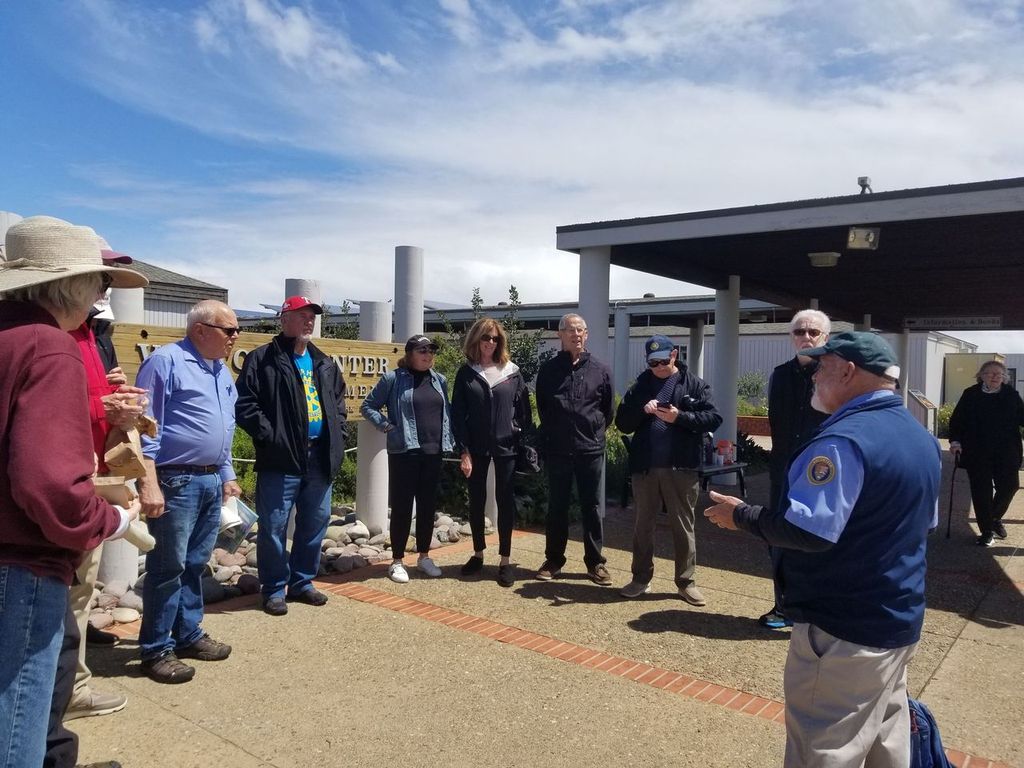 Juan Rodriguez Cabrillo led the first European expedition to explore the west coast of the United States. Cabrillo departed from Navidad, Mexico in 1542. Three months later he arrived at what is now known as San Diego Bay. He presumably anchored his flagship, the San Salvador, on Point Loma's east shore near Cabrillo National Monu
Juan Rodriguez Cabrillo led the first European expedition to explore the west coast of the United States. Cabrillo departed from Navidad, Mexico in 1542. Three months later he arrived at what is now known as San Diego Bay. He presumably anchored his flagship, the San Salvador, on Point Loma's east shore near Cabrillo National Monu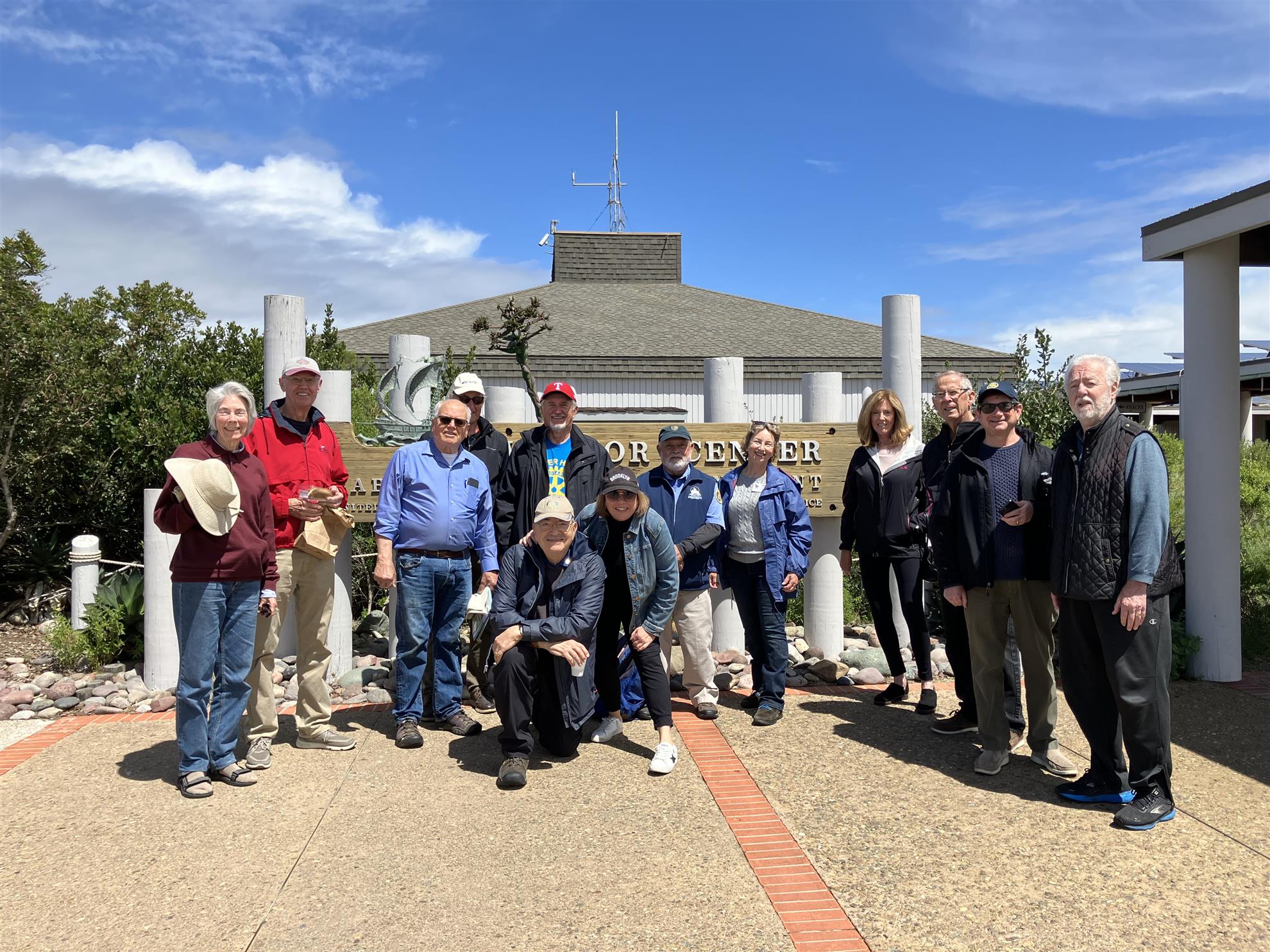 -
-ment. (The San Salvador replica currently docks at and sails from the SD Maritime Museum.)
This national monument was federally established in 1913. Construction of the original lighthouse began in 1854. It is the highest lighthouse in the U.S. But its elevation would be its undoing. Its light was of- ten obscured by fog and low clouds. The Ballast Point Loma Light Station was established at the lower elevation in 1891.
Photo left by Debra Gookin/photo right by Emily Moore
T
 he rocky intertidal area (pictured right), also known as the Tidepools, is a favorite spot at Cabrillo National Monument. Each year over 350,000 people visit the tidepools. Tidepools are depressions in rocks that are formed over millions of years through a combination of biological, physical, and ch
he rocky intertidal area (pictured right), also known as the Tidepools, is a favorite spot at Cabrillo National Monument. Each year over 350,000 people visit the tidepools. Tidepools are depressions in rocks that are formed over millions of years through a combination of biological, physical, and ch emical processes. Tidepools need a rocky coastline to form. As the tide goes from high to low, pools of water are left behind among the rocks, forming
emical processes. Tidepools need a rocky coastline to form. As the tide goes from high to low, pools of water are left behind among the rocks, forming tidepools. As the water moves away from the shoreline during a low tide, water and critters are trapped in these pools.
Photo left by Bill S/photo right by National Park Service
The Visitor Center is a good place to begin to explore the park. A self-guided two-mile walk through a coastal sage scrub forest begins near the Lighthouse. This trail offers spectacular views of the harbor and city of San Diego. Just south of the Lighthouse is the Whale Overlook. This vantage point offers robust views of the Pacific Ocean and the functioning Point Loma Lighthouse below. Whales are often seen from there in January and February.
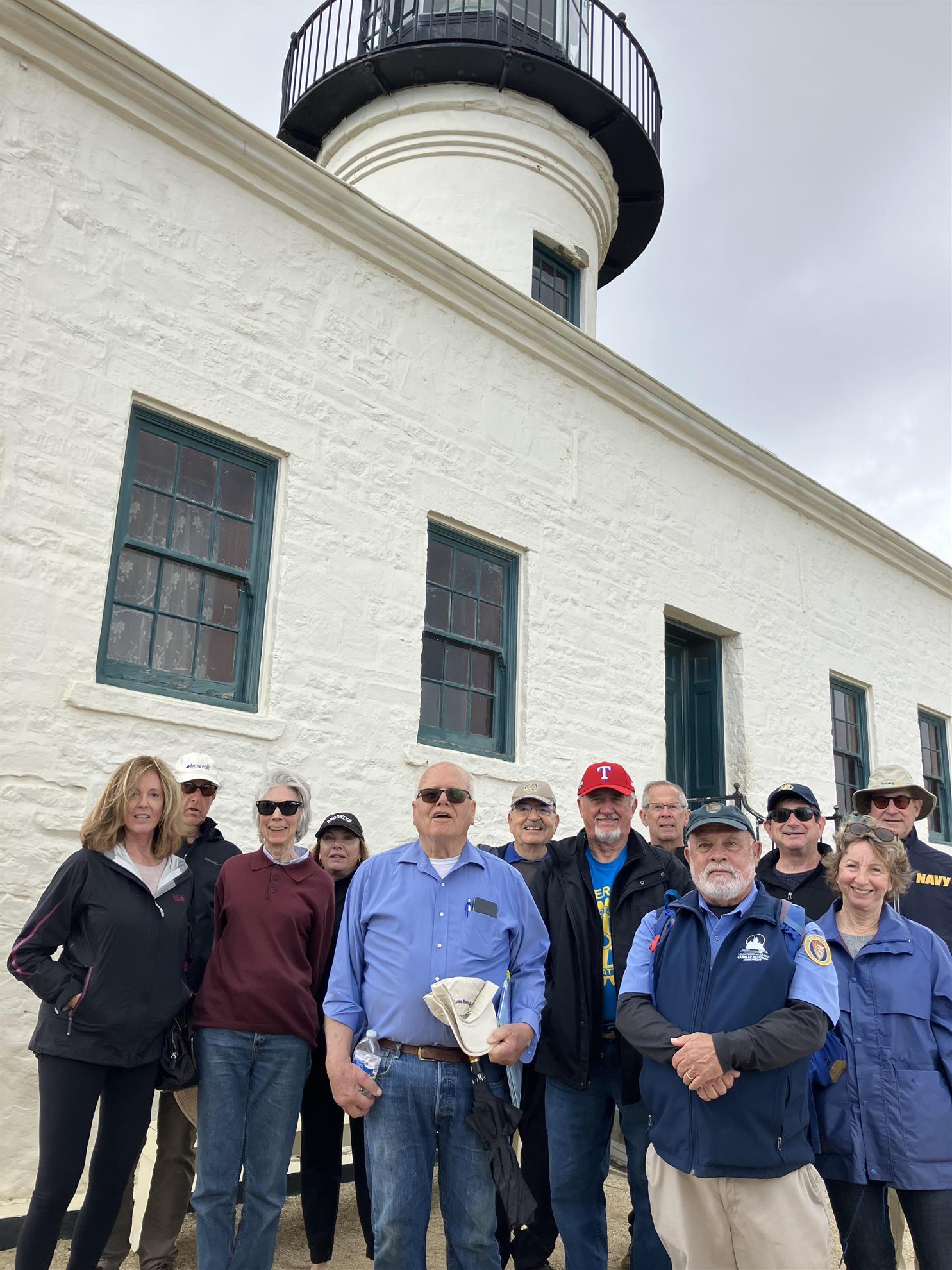
* The above descriptions are edited-combined versions of the outstanding talk by Docent Jack Vallerga and the Park’s
various homepage descriptions.
.png)












